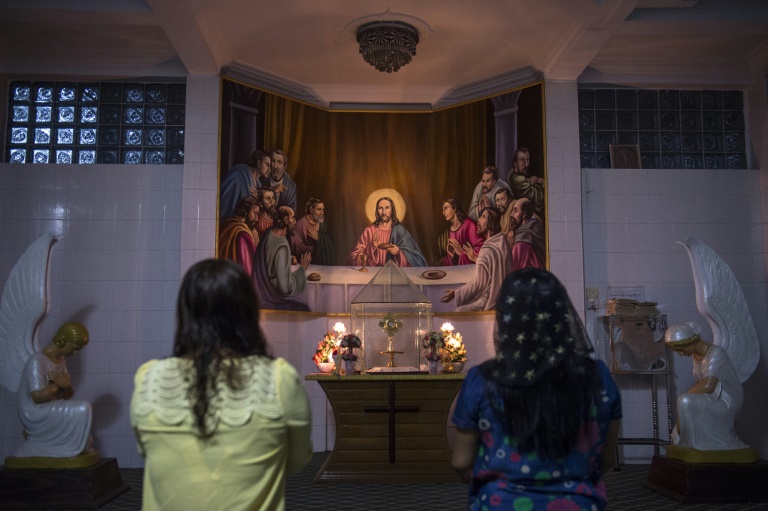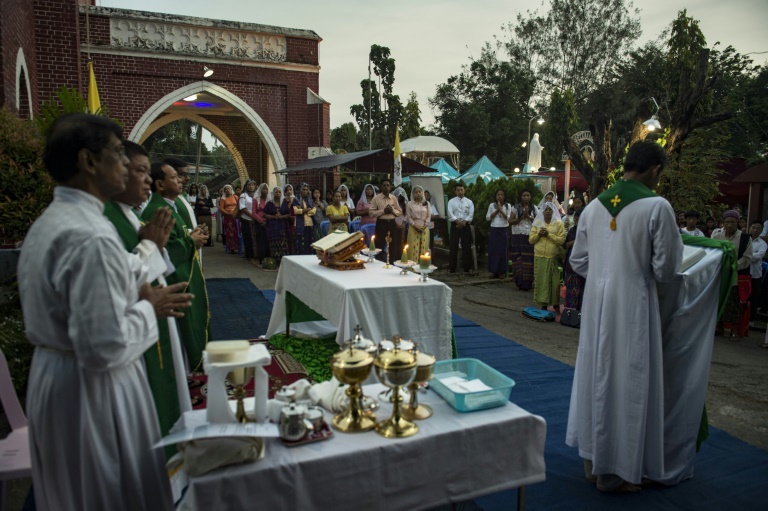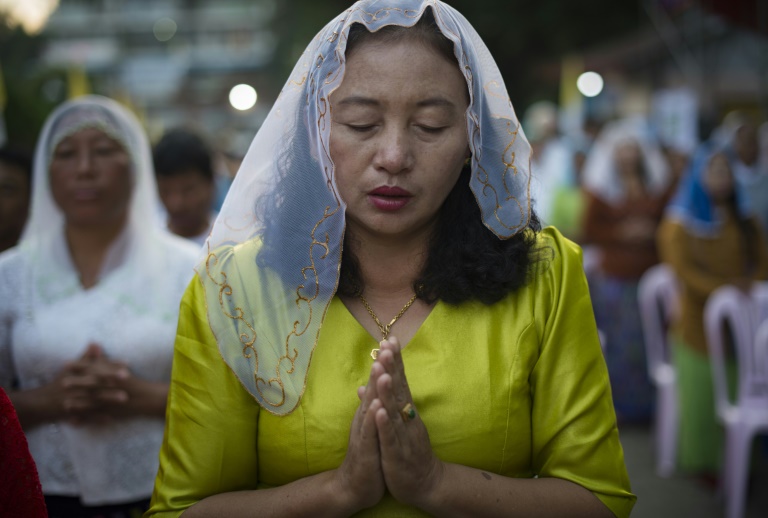TV news anchor Aldrin Sampear claims road rage video was edited, denies assault
Thin rattan mats edge up against marble graves of former priests, forming a makeshift open-air dormitary at the St.Francis of Assisi Church in Yangon.
With the first ever papal visit to Myanmar under way, the unlikely digs at the red-brick church have not spooked Zaw Ba or the other 1,000 Catholics crammed into the compound.
“It’s okay for us, we’re happy to have a place to sleep,” said Zaw Ba, 52, who like many others has made the two-day train journey south from Kachin State.
“And there’s a lot of people here so we are not afraid,” he added.
Nuns in light-grey habits clustered around an electric keyboard to sing hymns as pilgrims washed or ate, the early morning light on Tuesday catching their bright clothes.

Around 700,000 of Myanmar’s 51 million people are Catholic
Francis’s visit, which on Tuesday will see him meet Myanmar’s civilian leader Aung San Suu Kyi, is a once-in-a-lifetime opportunity for a small Catholic minority dispersed across Myanmar.
Many hail from remote, mountainous areas such as Kachin where wars between ethnic minority rebels and Myanmar troops rumble on far from international attention.
While the still burning Muslim Rohingya refugee crisis to the west has formed a dark, tense backdrop to the Pope’s visit, Myanmar’s diverse flock of Christians hope the pontiff’s message of peace ameliorates their lives.
“The Myanmar army is still launching attacks in Kachin state,” said Zaw Ba, a jade miner.
“I want the Pope to ask Daw Aung San Suu Kyi to do her best to bring peace,” he added, acknowledging that The Lady, as she is known, is straitjacketed by a still powerful army.
Tens of thousands of Kachin — a group that is predominantly Baptist — remain displaced in camps in the region, including some Catholics who made the journey to Yangon to see the Pope lead a mass on Wednesday.
– Betel nut, longyi and prayer –
Myanmar’s Catholics — who come from ethnic Kachin, Karen, Chin, Akha and other minority groups — number only 700,000, a fraction of the country’s 51 million population.

Hundreds of people bedded down in the graveyard at the church of St Francis of Assisi
But the flock is growing, Father Jacob, an ethnic Karen priest at St. Francis’s Church, told AFP, especially in northernmost Myanmar where entire villages are known to convert en masse.
“They are very obedient to their leaders. If the leader (of a village) becomes a Catholic, everybody becomes,” explained the affable priest, wearing a longyi, smoking Burmese cigarettes and gnawing on betel nut.
Syncretic practices have seeped into their worship, the Father explained, with traditional dances still held as offerings to God ahead of church ceremonies.
Seeded in Myanmar by Portuguese missionaries in the 1500s, Catholicism took root in remote hill-tribe villages far from the reach of the Buddhist-dominated state.
But it was suppressed under the ultra-nationalist junta that seized power in the mid-20th century and held on for five decades.

Christianity arrived in Myanmar in the 1500s, brought by Portuguese missionaries, and took root among the hill tribes far from the reach of the Buddhist-dominated centre
Freedoms have inched back in recent years as the country transitions into democracy, with Myanmar receiving its first Cardinal in 2015 and establishing formal ties with the Vatican earlier this year.
The pope’s visit is a celebration of the Church’s emergence.
But it is also clouded by the plight of Muslim Rohingya, with rights groups hoping the pontiff will speak up for a minority reviled by many in Myanmar.
“He will say in a short sentence, to love them all as brothers and sisters,” speculated Father Jacob.
Download our app